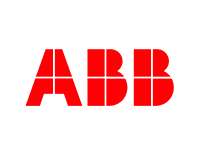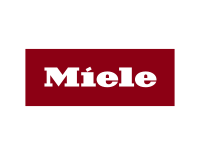Digitalization Strategies and Digital Twins
Shaping Digitalization throughout the entire Product Lifecycle.
Digitalization Strategy: Aligning the digital transformation with product strategies and business models
In the course of advancing digitalization, new business models are emerging at many companies. Increasingly, not only pure (physical) products are sold, but also associated services (product/service systems). In combination with shorter development cycles and increasing amounts of data, the right digitalization strategy is becoming a key competitive advantage for companies.
For the successful implementation of these strategies, the existing development processes and tools used are of decisive importance with regard to their future viability. The digitalization topics to be considered are diverse and range from customer and Requirements Management (CRM, REQ) to development and simulation (CAD, CAE, CAT) to maintenance and service.
Together with your departments and your (engineering) IT, we develop a digitization strategy tailored to your company. We define roadmaps for topics such as Requirements Management, (Model-based) Systems Engineering, (simulation) data and model management, verification, validation and set up the necessary IT architecture together with you. In this way, we leverage short-term potential and create long-term synergies by closely synchronizing IT with the specialist departments.

What added value do our services in the context of Digitalization Strategy and Digital Twins offer you?
With our holistic approach, we help you to strategically plan and implement the digital transformation
We always implement digitalization with a focus on the necessary information flow of your processes, thus avoiding unnecessary additional work
With MBITA, we create a sustainable data basis to document decisions regarding IT architectures transparently and comprehensibly at all times
Into the future of engineering with the Digital Twin

The central building block of many digitalization strategies is currently the so-called “digital twin”. We at :em AG understand this to mean the following:
A digital twin is a dynamic and cross-domain virtual image of a physical system that is connected to it for bidirectional data exchange. The digital twin is created through the targeted, seamless and continuous networking of information from different phases of the life cycle of an instance of a product/service system.
We are your partner for the realization of digital twins and offer you a modular solution concept, from strategy definition to putting it into practice in your process landscape and IT architecture. For this, we provide you with our bundled expertise from engineering know-how, IT architecture and consulting methods.
For the realization of digital twins, we align the prerequisites and management goals with the specific use cases of the specialist departments and the technologies necessary for their implementation.
In particular, it must be examined what effects the digitalization of products has on the engineering IT and the IT architecture and how these can be adapted to the product strategies. Furthermore, the number of cross-company collaborations is increasing, flexible and highly dynamic value chains are emerging and the digital connection process of an increasing number of cooperation partners is becoming a challenge for many companies.
With our maturity model, developed from many consulting projects, you can evaluate and transparently track your company and the progress in the implementation of the digital twin at any time.

Follow The Data – with Model Based IT Architecture “MBITA”
Using the MBITA method (Model-based IT Architecture) developed by us for IT application planning, a specialization of Enterprise Architecture Management (EAM), we bring your existing or future IT application landscape into an comprehensive process context in order to reduce its complexity – and to create transparency about all business processes, information flows and objects. We focus on the creation/modification and use of information objects within this application landscape. Validated end-to-end application templates enable us to achieve quick initial results.
MBITA creates maximum transparency and ensures efficient application planning and future-proof IT architecture as a contribution to your company’s digitalization strategy! At the same time, MBITA simplifies the complexity of the application landscape to what is really necessary in order to save costs and avoid redundancy.
Plan and implement cooperations with foresight
In the age of digitalization, it is common to source knowledge outside the core areas through projects with OEMs, partners, joint ventures and service providers. In flexible and highly dynamic value creation systems, the efficient and secure integration of partners remains one of the most important challenges of cooperations.
We support you with:
- the development of an individual concept for efficient collaboration in digital cooperations,
- planning and implementing cross-company value chains based on standards, and
- the secure provision of data and applications in the sense of the need-to-know principle.
Modern collaboration also requires special demands towards the software tools used.
Only after successful completion of the certification process is an application approved for use by external partners in collaboration or for international use. AppCert is a continuous testing and approval process for applications that we have developed to significantly increase efficiency in establishing and dismantling collaborations.

Find more information about our Digitalization Strategies and Digital Twins in our PDF flyers
Please download our information brochures on Digitalization Strategies and Digital Twins below.
Digitalisierung im Engineering (German)
MBITA® – Model Based IT Architecture (German)
Kooperationsmanagement (German)
Digitaler Zwilling (German)
FAQ – frequently asked questions on the topic of Digitalization Strategies and Digital Twins
A digital twin is a dynamic and cross-domain virtual image of a physical system that is connected to it for bidirectional data exchange. The digital twin is created through the targeted, seamless and continuous networking of information from different phases of the life cycle of an instance of a product service system.
Enterprise Architecture Management (EAM) helps companies to analyse their current IT application landscape and plan their future.
EAM often focuses on the technical requirements in IT applications. The link to business processes, in which diverse information is to be processed and collaboration scenarios are to be supported, is often left out.
MBITA brings the existing IT application landscape into a comprehensive end2end process context. In this way, transparency can be achieved across all information flows of the entire product development process (PEP). By reusing elements of the IT application landscape in a model-based approach, MBITA reduces their complexity and enables cost savings as well as the avoidance of redundancies.
We are answering this question within the framework of the Standardisation Strategy Board project group in the prostep ivip association, in which we are active as project coordinators. In the focus of Collaborative Systems Engineering, recommendations for the use of standards are developed there, which are made available to the members of the association in the form of Fact sheets.



















